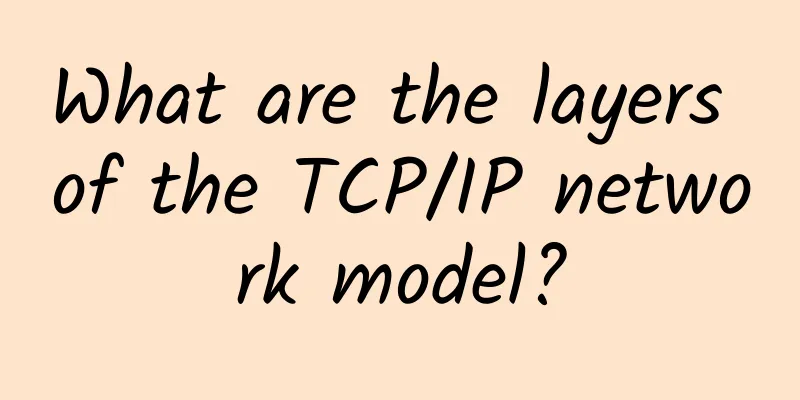my country's 5G is still in the introduction stage, and integrated applications are still in the running-in stage

|
Statistics show that by the end of 2020, about one million 5G base stations have been deployed worldwide, with about 250 million 5G users. As of January 2021, the number of 5G terminals in the world reached 588, of which 365 were commercial terminals, accounting for 62%. Let's take a look at the development of my country. Due to the insistence on moderately advanced 5G network construction and the formation of a "build to promote use" development model, by the end of 2020, the cumulative number of 5G base stations built exceeded 718,000, achieving extensive coverage of all prefecture-level and key counties and districts across the country, the number of individual users has expanded rapidly, and the number of 5G mobile phone terminal connections in my country has exceeded 200 million. At the same time, my country's 5G independent networking has been commercialized. At the same time, industry applications are gradually being put into commercial use, the development path of my country's 5G integrated applications is becoming clearer, and 5G integrated applications are accelerating. However, 5G in my country is still in the introduction stage, and 5G integrated applications are in the running-in stage. The development path of 5G integrated applications in my country is becoming clearer At present, my country's 5G application scenarios are constantly enriched, the degree of integration is constantly deepening, and the development path is gradually becoming clear. It can be divided into three stages: The first stage is 5G applications based on high-definition video. With a clear industry chain and a solid technical foundation, high-definition video will become the first batch of mature and rapidly replicated 5G applications. The second phase is based on edge-cloud collaborative VR/AR 5G applications. With the commercialization of SA networks and the maturity of MEC, cloud and edge processing capabilities continue to improve. 5G applications such as edge-cloud collaborative AR/VR are expected to be commercialized in the second batch. The third stage is 5G applications based on low latency. As 5G end-to-end slicing technology matures and artificial intelligence technology becomes more efficient, 5G applications that require low latency and high reliability will be commercialized. 5G converged applications are accelerating With the construction of 5G networks, industry applications are gradually being put into commercial use, especially 5G converged applications are accelerating. Among them, "5G + information consumption" has triggered new changes, "5G + industrial Internet" has become the focus of development, "5G + Internet of Vehicles" typical scenarios have been implemented first, and "5G + medical health" has moved from trials to clinics. First, "5G + information consumption" has triggered new changes, which are mainly reflected in the diversification of entertainment methods, the birth of new terminals, and the integration of online and offline consumption. Diversification of entertainment methods mainly refers to 5G combined with high-definition video and AR/VR technology to provide diversified new entertainment methods and enrich the public's home entertainment life. For example, 5G solves the real-time transmission problem of big data services such as ultra-high-definition video and VR panoramic video, and users can get a clear, smooth and all-round viewing experience. 5G is equipped with a cloud platform and combined with VR/AR, voice recognition, field of view tracking, gesture sensing and other technologies. Users can get a more immersive gaming experience. The birth of new terminals means that the 5G consumer field will usher in more new terminals, evolving from traditional information products such as PCs, tablets, and smart phones to wearable devices, smart homes, VR/AR products, smart connected cars, and smart service robots. The integration of online and offline consumption refers to the increase in the breadth and depth of online and offline consumption and the change of consumption patterns towards immersive interactive experience. Secondly, "5G + Industrial Internet" has become the focus of development. This is reflected in the R&D and design links, production links, and operation and maintenance service links. For example: In the R&D and design stages, the combination of 5G and VR/AR technology can realize remote virtual collaborative design among multiple parties (efficiency is increased by 5 times through interaction with real models of components obtained on site), effectively solving problems such as communication difficulties and high costs for R&D personnel in different locations. In the production process, 5G is combined with ultra-high-definition video, sensors, control systems, etc. to assist the equipment's AGV, remote operation, and real-time monitoring of the production process to improve quality and efficiency. In the operation and maintenance service link, the combination of 5G and ultra-high definition can transmit equipment inspection status to the cloud in real time for identification, improving the quality and efficiency of predictive maintenance and equipment inspection. Third, typical scenarios of "5G + Internet of Vehicles" have been implemented first. After the mature application of information services such as mobile network online navigation, congestion reminders, vehicle life cycle management, and Internet of Vehicles insurance, L4-level autonomous driving applications have been commercialized in ports, mines, and park environments. For example, port networked autonomous driving can improve loading efficiency and reduce safety risks. It has been applied in ports in Shandong, Guangdong, Fujian and other places. Autonomous driving trucks follow the planned path of the operation scheduling system and follow the track based on their own perception and computing capabilities. C-V2X communication is used between vehicles to avoid collisions. The networked autonomous driving of mines can improve the overall operating efficiency and reduce the number of on-site operators. Tests have been carried out in smart mine scenarios in Inner Mongolia, Henan and other places. When the vehicle is driving abnormally, the 5G network will transmit the high-definition video from the vehicle to the remote control cockpit in real time, and send the manual remote control command to the mining truck to help the mining truck get out of the abnormal state. Fourth, "5G + Healthcare" has moved from trials to clinics. There are three main application scenarios: monitoring and nursing applications, diagnostic guidance applications, and remote control applications. my country's 5G is still in the introduction stage, and 5G integrated applications are in the running-in stage. However, my country's 5G development is in the introduction stage, and in the future it needs to achieve a leap from 1 to N. In terms of the personal market, as the penetration rate of 5G users reaches a certain scale, 5G innovative services will emerge explosively under the scale effect; in terms of the industry market, 5G has richer scenarios than NB, more diversified industries, more complex challenges, and a longer outbreak time, which requires key traction. At the same time, 5G converged applications need to be further integrated and connected end to end. It is understood that the 5G application technology architecture has been initially formed, and the various layers are still in the continuous running-in stage. The industry urgently needs to reduce the cost of 5G modules. "If we want to apply the 4+1 technology system architecture of 5G and form a complete end-to-end 5G converged application solution. In the future, all levels need to be continuously adapted, adjusted and improved, especially to form a network layer and a general capability platform layer that can meet the needs of various industries and achieve replicability and commercialization, so as to truly meet the personalized needs and security requirements of the industry." Li Shan, director of the Wireless Application and Industry Research Department of the Radio Research Center of the China Academy of Information and Communications Technology, said, "In particular, we need to increase investment in key areas to promote the scale of 5G modules and reduce prices." In addition, the 5G integration industry chain is long and requires the construction of a new ecosystem and a new model. According to Li Shan, the current 5G application industry ecosystem is complex and has not yet been formed; three types of companies are based on their own advantages and enter the integrated application market from different fields. Currently, operators are still the mainstream. Moreover, market demands are complex and diverse, and there is no fixed cooperation model at this stage. More new companies may enter the market, and the positioning of existing participants may also change. "The industry positioning and cooperation model of each link are still in a dynamic growth process, the business model is constantly evolving, and new solution providers will emerge in the future." How will the future develop? In view of this situation, how should my country's 5G develop? Li Shan said that the focus should be on four aspects: strengthening technical support capabilities, improving network supply capabilities, establishing a large integrated application ecosystem, and strengthening policy coordination and support. Strengthening technical support capabilities mainly involves accelerating the development and commercialization of R16 network and terminal products; increasing investment and support for the formulation of R17 and R18 version standards to ensure the progress of standards; and promoting 5G end-to-end slicing, edge computing and other technologies to accelerate large-scale commercial use. To improve network supply capacity, we should insist on being moderately ahead of the times, strengthen network construction in key areas and key industries, and apply industry virtual private networks on a large scale; promote the coordinated development of 5G network infrastructure and other new infrastructure in various regions; Explore new models for building 5G industry virtual private networks. Establish a large integrated application ecosystem, that is, clarify the development path of 5G applications, focus on general-purpose terminals and capabilities in various industries, and promote the development of low-cost chips/modules; give full play to the leading role of leading enterprises in various industries, cultivate a group of industry application solution providers; carry out cross-industry cooperation and docking, and build a large 5G integrated application ecosystem. Strengthening policy coordination and support means promoting various industries to formulate policies for 5G integrated development, strengthening the coordination and linkage between the state, ministries, provinces and cities, breaking down industry barriers to integrated application development; and promoting various industries to build a 5G integrated standard system; Accelerate the research and formulation of relevant laws and regulations, promote innovation in regulatory models, and improve the regulatory system. |
<<: South Korea has nearly 13 million 5G users as of January
Recommend
Last day! Tencent Cloud: 1C2G5M lightweight server 48 yuan/year, 2C4G8M three years only 198 yuan, COM domain name first year 1 yuan
Tencent Cloud's Double Eleven event has offic...
Operating system: Introduction to SSH protocol knowledge
Today I will share with you the knowledge related...
How to unify heterogeneous networks within a home? 6LoWPAN is a good choice
Part 01 What is 6LoWPAN In order to enable low-sp...
RAKsmart: 50% off all VPS hosting, VPS in Hong Kong/Japan/San Jose starting from $2.63 per month
We often share RAKsmart's product information...
API security representative manufacturer! Ruishu Information is selected into China's data security development roadmap
On August 26, IDC, a leading global IT research a...
Is your home router safe? Tests on 18 routers tell you...
Fearing Wi-Fi radiation, parents asked schools to...
Under heavy pressure, the three major operators began to take the road of competition and cooperation
Today, with the increasing homogeneity of the fiv...
IT presents a new normal in the post-epidemic era. 7 "prescriptions" can help you cure the "sequelae"
In early 2020, the coronavirus pandemic hit IT li...
A glimpse of the "treasure" in the tube: the last piece of cake for operators
Global Internet giants are accelerating their pen...
6G Proposal: Entering a new stage and meeting new challenges
At the 44th meeting of the ITU-R WP5D, the ITU co...
Wenku: We need to further explore 5G applications
[[351795]] On November 6, the State Council Infor...
Huawei: Realizing a truly bright future for the Internet of Things
Huawei has always been an active promoter and pra...
When 5G network solves the fee issue, will your phone still use WiFi?
Recently, British media reported that Ofcom's...
The latest report on the value of the French 5G market: 100% 5G network is expected to be achieved by 2030
According to foreign media reports, in December 2...
Which collaboration metrics determine the business value of an application?
The criteria for evaluating the business value of...









